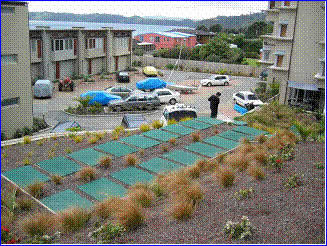Black water contains more pollutants or waste matter, as compared to gray water since it has fecal matter and urine. Black water also contains pathogens, which need to be eradicated or decomposed first before the water can be released safely into the environment.
As such, black water is a serious problem in most municipalities and cities, since it takes much more than simple filters and chlorine or UV light to make black water usable again. Therefore, many households only opt for gray water recycling systems and let city mayors
Types of Black water recycling systems
Listed below are the different types of black water recycling systems that can be used in municipalities around the world.
Waterless System with Urine Diversion
This type of system is designed for areas where digging is difficult, such as rocky areas, or for water-scarce cities or regions. Feces are stored in a watertight Dehydration Vault, which dries up and treats the waste matter. Lime, ash and dry earth should be used to cover the feces to eliminate odor and act as a barrier and protection against organisms like flies. Urine can be channeled to the ground for irrigation, soil infiltration or into a soak pit. Storage tanks are used to collect and treat urine.
Black Water Treatment System With Infiltration
This water-based system can be used in areas or cities where desludging is inexpensive and readily available. The system basically directs black water or waste into a compartment, which reduces the pathogens and organic load of feces and urine. These compartments come in the form of a septic tank, an anaerobic baffled reactor or an anaerobic filter. From the treatment compartment, the water can be directed onto the ground, into a soak pit or in a leach pit. The fecal sludge generated from compartments should then be removed for further treatment in dedicated facilities or it can be diverted into a sewer discharge station.

Black Water Treatment System with Sewerage
This system can remove or digest solids from black water and then channel it to a centralized treatment facility. It uses basically the same components as a black water treatment system with infiltration, but takes it a step further by directing the water to a storage or treatment facility through an interceptor tank and a simplified sewer network. The treated resulting effluent can then be used for irrigation, macrophyte ponds, aquaculture or for recharging ground water. This system is expensive and difficult to maintain, requiring high maintenance and commitment.

(Semi-) Centralized Treatment System
This type of system is one of the most expensive ones and is best used for urban and dense cities or areas. Black water is channeled to a centralized facility through a Simplified Sewer Network or a Gravity Sewer Network. It is then treated with gray water, to help prevent solid matter from collecting and clogging the sewers. The product of this system is either effluent or fecal sludge.
Why use a black water recycling system?
There are numerous benefits that a city can enjoy if it employs a black water recycling system, including:
- It reduces the stress on old septic tanks.
- A city can conserve more clean water by using recycled black water for chores and tasks such as watering lawns, non-food crops and gardens, and even for road cleaning, etc.
- When black water is treated, and released back into the environment in a cleaner form, it helps preserve natural water habitats.
- Recycled black water is rich in nutrients for plants.
- Recycling black water can be a solution for the water shortages experienced in some cities and areas.